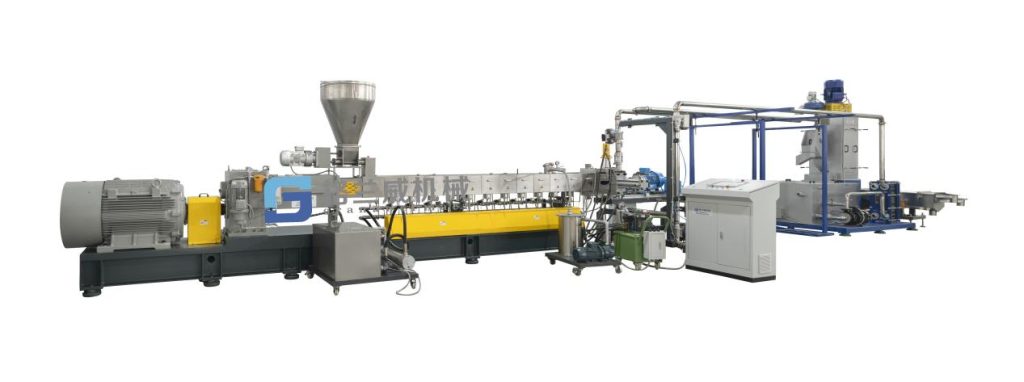To enhance the quality of their final products, certain manufacturers have invested in costly underwater pelletizers, only to discover that the moisture content of the pellets remains high. Is there truly no distinction between expensive underwater pelletizers and more affordable ones? In reality, it’s simply an oversight in the production process.
In plastic granulation production, the primary pelletizing methods employed are air/water cooling strand pelletizing, water ring pelletizing, and underwater pelletizing. In pelletizing systems where water is used as a cooling medium, the choice of pelletizing method directly impacts the surface moisture of plastic particles, which in turn affects the quality of the final particles. Among these methods, controlling the water content in underwater pelletizing proves to be relatively challenging.
So, what factors influence the water content of underwater pelletized products?
Impact of pelletizing blades:
1. During operation, pelletizing blades may wear out.
Once worn, they can produce burrs on the cut particles, which tend to adsorb water. This absorbed water is challenging to remove during subsequent dehydration processes, resulting in elevated water content.
2. Impact of filter screens:
Prolonged use of filter screens can lead to excessive head pressure and screen changing pressure. Upon exiting the mold, the material experiences sudden pressure release, causing swelling that easily traps water vapor, forming voids. Consequently, water retained within the material cannot be eliminated during subsequent drying.
3. Low head pressure:
Inadequate head pressure reduces material density extruded from the die, allowing water to infiltrate particles during conveyance. This seeped water proves difficult to release during dehydration.
4. Mismatched dehydrator:
Dehydrator power is too low, rotor diameter is too small–Incompatible dehydrators may result in insufficient dewatering and shortened particle climbing distances during the dehydration process, hindering effective moisture removal.
5. Low water tank temperature:
Hot water dehydration is more efficient than cold water dehydration. Even in cooling strand pelletizing, the most effective dehydration method involves blowing hot air. Initially, granular material often retains high moisture content due to the need to lower the water tank temperature as water enters the circulation system, subsequently increasing in temperature as granular material transfers heat from the granulator.
6. High water tank temperature:
Excessively high water tank temperatures can slow particle cooling, leading to surface pitting and swelling of particles, trapping water as they contract during cooling.
7. Low water volume in the water tank:
Insufficient water volume in the tank can impede water circulation, prolong particle soaking, and result in water infiltration, leading to high particle moisture content.
8. Unstable feeding:
Inconsistent feeding can cause significant variations in particle size, with larger discrepancies resulting in higher moisture content in larger particles.
Advantages of underwater Pelletizing system: high degree of automation, beautiful final product shape, especially suitable for medium and large volume production. It is suitable for the modified granulation of most plastics. However, for some easily absorbent materials, it is not recommended to adopt the underwater pelletizing system, besides, the ultra-high temperature plastics in engineering plastics are also not recommended to use such underwater pelletizing system.

